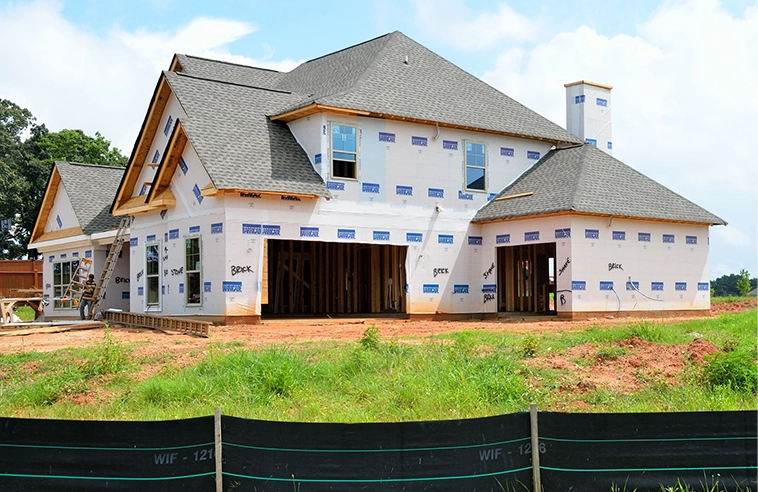Construction Worker Safety Includes Mental Health
Every decent GC cares about the physical safety of their contractors and takes the steps necessary to ensure a job site that’s as physically safe as possible, given the inherent risks involved in construction. However, the suicide rate in construction is almost five times greater than the rate of fatal work injuries.

The U.S. Bureau of Labor Statistics reports that in 2019, there were 9.7 fatal work injuries per 100,000 full-time construction workers. Compare that number to the findings of the Centers for Disease Control and Prevention (CDC). In the construction industry, there were over 45 suicides per 100,000 male construction workers in 2016.
By industry, construction has the second highest male suicide rate after “Mining, Quarrying, And Oil and Gas Extraction” which has a rate of 54.2 suicides per 100,000 male workers.
The rate of male suicide in construction is also about four times higher than the rate of suicide in the general population.
Of course, there are many factors that play a role when someone takes their own life — including their personal relationships which exist outside of the workplace. However, workplace factors can be significant. And, as the CDC puts it, “Because many adults spend a substantial amount of their time at work, the workplace is an important but underutilized location for suicide prevention.”
Note that psychological distress in the construction industry isn’t limited to laborers. “A web-based survey in the United Kingdom focusing on construction managers found that 68.2% of construction professionals reported significant stress, anxiety, or depression related to their work.”[i]
Investigating the causes of mental illness and the subsequent risk of suicide can help those in leadership positions in the construction industry make effective changes to support the mental health of their employees and contractors. Isn’t it time to accept that construction workers’ mental health falls under the umbrella of construction safety?
Why is mental illness such a major problem in the construction industry?
Nobody knows for sure why mental illness is so prevalent in the construction industry, but researchers have been able to identify various factors that contribute to the problem.
Stigma
Construction is very male-dominated and the ‘macho’ culture that persists contributes to stigma surrounding mental health issues and may prevent workers from either talking with co-workers or seeking help from Human Resources or their workers’ union. Untreated mental health problems often persist or worsen.
A 2020 research article based on a survey of construction workers in the United States found that engaging in health-promoting behaviors was often perceived as weakness among construction workers. “As a result, some participants discussed neglecting self-care, for example not taking sick days when one was ill.”[ii] One of the survey participants said:
“If you don’t work while you’re sick, all the guys on the ground will still be cracking on for days and weeks… giving you a hard time and shit like that.”[iii]
The authors note that in an industry where workers feel discouraged from taking sick days for fear of ridicule, peers would be unlikely to talk about mental health problems. Furthermore, workers are deterred from seeking mental health through provided supports because doing so would mean “they have to admit that they’re in that situation.”[iv]
Physical pain
Construction work is often physically demanding. And physical pain causes emotional distress — “a warning sign for mental illness.”[v]
“I know a couple of blokes I work with at the moment – one of them is 50, he’s decrepit, he’s got a very bad back and he’s always miserable because he has no other trade or skill behind him, so he has to work, but he’s got constant pain so mentally he’s worn out.” (Floor layer, 33 years old)[vi]
Furthermore, “anxiety and depression raise the risk of developing a musculoskeletal disorder.”[vii] This means that mental illness increases the odds that a worker will be physically injured on the job.
Job demand and fatigue
Long hours (often in excess of 60 hours per week) and work overload — having to do a lot of work quickly — are risk factors for stress and mental illness. Early morning starts coupled with long commutes to job sites also negatively impact sleep — adding to the risk of fatigue, which in turn increases the risk of mental ill health. Age discrimination is also an issue, with younger employees often being expected to work more — but with less support and low job control (i.e. little opportunity to make work-related decisions).[viii]
Promoting construction workers into positions they aren’t sufficiently trained or equipped for leads to fear of failure. This appears to cause them “to attempt to prove themselves, which in turn caused increased strain and led to burnout and eventually psychological or mental distress, such as anxiety and depression.”[ix]
Lack of job control
Experiencing little control over one’s work is a major risk factor for mental ill health. This includes things like having limited opportunities to make work-related decisions, not being able to speak about workplace happenings, and imbalances in how work is distributed between workers. In addition, “authoritarian culture and strict rules of scheduled work routine” also increased the risk of mental ill health.[x]
Job insecurity
Feeling that their job isn’t secure makes a worker more likely to experience high anxiety:
“Job insecurity was associated with a high level of anxiety among all grade levels (middle and lower levels) of construction sector workers… [O]lder employees feared job insecurity because of emerging technologies that younger employees are more familiar with.”[xi]
In addition, perceived job insecurity also makes workers less likely to seek help with mental health problems:
“There appeared to be an understanding among most of the workers that they were easily replaceable and showing any sign of weakness, for example, experiencing a mental health problem could jeopardize their employment status.”[xii]
Income
Finally, and unsurprisingly, income is related to mental health:
“Low income was associated with a high level of depression and suicide ideation… [H]igher income was related to improved coping styles, lower anxiety, and lower rates of alcohol abuse.”[xiii]
Resources
Just as great strides have been made over the years in improving physical safety on job sites, it’s possible to make changes that improve mental health and reduce the risk of mental illness and suicide.
If you’re in a position to try to improve workers’ mental health in the construction industry, here are some resources to check out:
Workplace Suicide PreventionNational Action Alliance for Suicide Prevention (workplace)Occupational Health and Safety Administration (preventing suicides)The Center for Construction Research and Training (suicide prevention resources)The Construction Industry Alliance for Suicide Prevention
*If you know someone in the construction industry who’d find this article helpful, please feel free to share it.
Please contact Matt at (316) 706-0368 or matt@prohome.com if you’re interested in learning more about builders’ warranty management. [i] Mara Eyllon et al: Mental Health Stigma and Wellbeing Among Commercial Construction Workers, Journal of Occupational and Environmental Medicine, August 2020: Volume 62, Issue 8. [ii] Mara Eyllon et al [iii] Mara Eyllon et al [iv] Mara Eyllon et al [v] Chan et al: Mental Ill-Health Risk Factors in the Construction Industry: Systematic Review, Journal of Construction Engineering and Management, March 2020: Volume 146, Issue 3 [vi] Turner & Lingard: Examining the interaction between bodily pain and mental health of construction workers, Construction Management and Economics, July 2020: Volume 38, Issue 11. [vii] Chan et al [viii] Chan et al [ix] Chan et al [x] Chan et al [xi] Chan et al [xii] Mara Eyllon et al [xiii] Chan et al [ZR1]H2 tag




